Berlin is the capital city of Germany, dating to the 1300s. It was initially a small town but eventually became the capital of the former Kingdom of Prussia. Of course, it’s most well-known for its role in the 20th century when it became the center of world events during the first and second world wars. The city was heavily damaged during WWII and was subsequently divided into two halves: East Berlin was controlled by Russia, and West Berlin became an enclave of freedom controlled by the Allied forces.
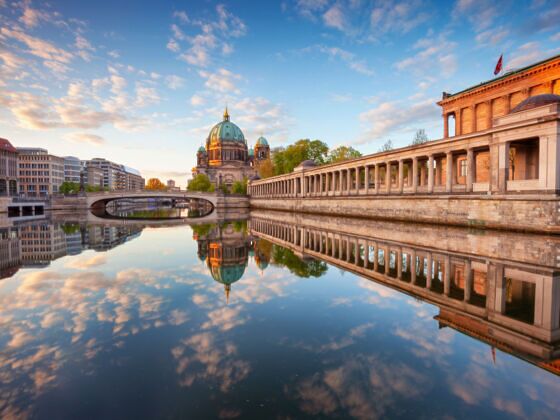

The 7 Best Historical, Artsy, and Quirky Museums in Berlin
The division of Berlin was symbolized by the construction of the Berlin Wall in 1961, which divided the city for 28 years until it was torn down in 1989. The fall of the Berlin Wall marked the beginning of a reunified Germany, and Berlin regained its capital status in 1990. Today, the wall is almost entirely removed, and many Berlin museums have art-covered sections of it in their collections.
Today, the city is a popular tourist destination, and the best museums in Berlin show off the city’s fascinating past and creative and lively current culture. If you haven’t been to the city before, these are the seven museums in Berlin you won’t want to skip.
-
- Map of Berlin’s best museums
- Details on using the Museum Pas
- The 7 best museums in Berlin
- Where to stay in Berlin
Where to find the best museums in Berlin
Visitors to Germany planning to visit the top sights in Berlin may want to purchase a “Welcome Card.” The Berlin Welcome Card includes unlimited travel on public transport in the city, including buses, trains, trams, and the metro, and provides discounts at more than 200 attractions and museums across the city. The discounts range from 25 to 50 percent off the regular cost of admission and the card comes in various configurations depending on what you want to see and how long you want to stay.
The Berlin Museum Pass
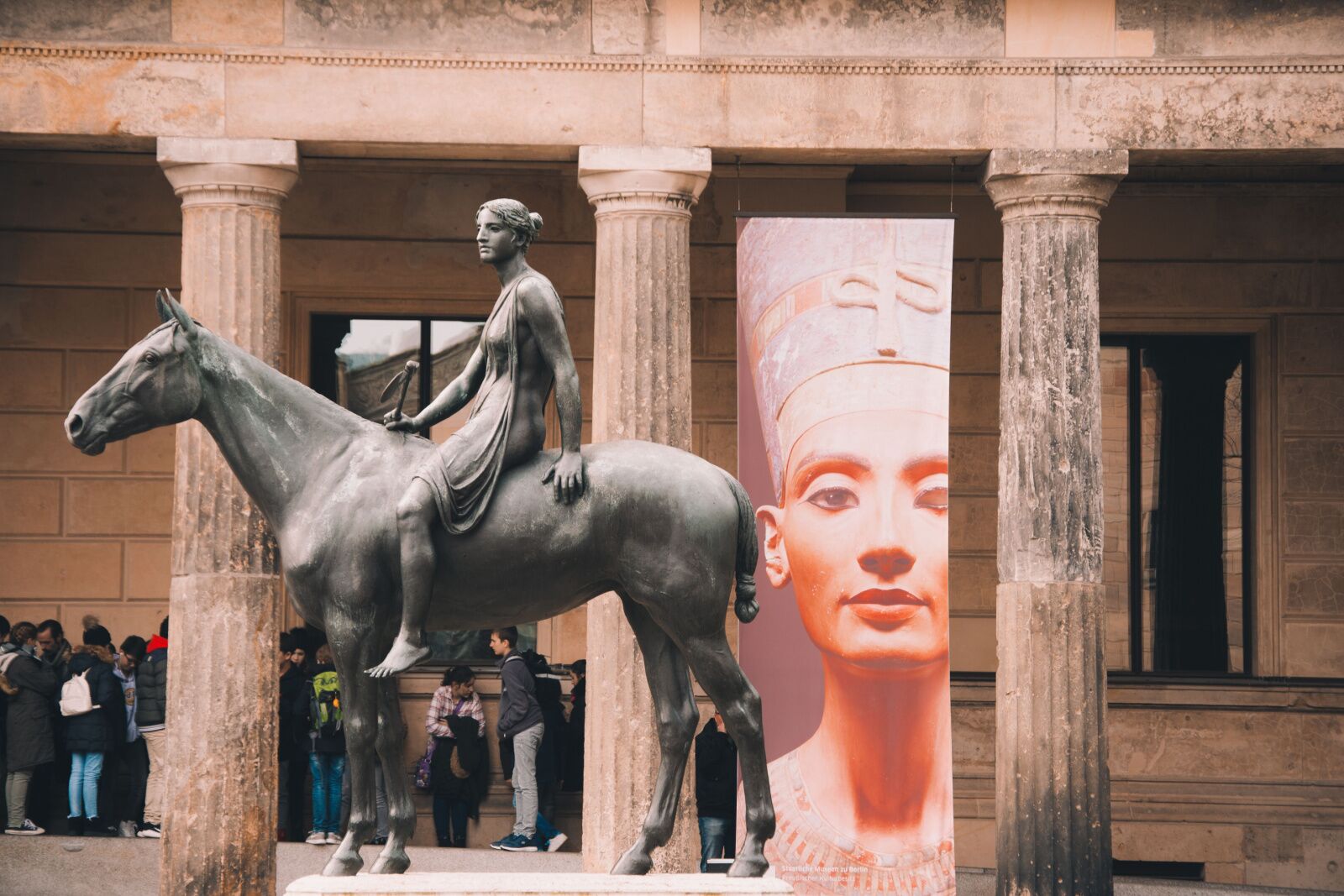
Photo: Emilio JoseG/Shutterstock
If you’re planning to visit a few museums in Berlin, consider buying the Berlin Museum Pass. The pass includes admission to more than 30 different museums and attractions in the city, including museums in Berlin like the the famous Museum Island, the Berlinische Galerie, the Jewish Museum, and many more.
The pass is available in durations ranging from three days to two weeks and allows you to skip all the lines. Buying a pass is cheaper than paying for separate admission tickets, and it comes with a guidebook about museums in the city, including hours, museum highlights, and more. Some museums also include audio tours free for museum pass holders.
Prices range from 29 Euro (about $32) for adults and €14.50 (about $15.50) for kids for a three-day pass, all the way to €69 for adults (about $78) and €34.50 (about $37) for kids for a two-week pass.
Museum Island Berlin
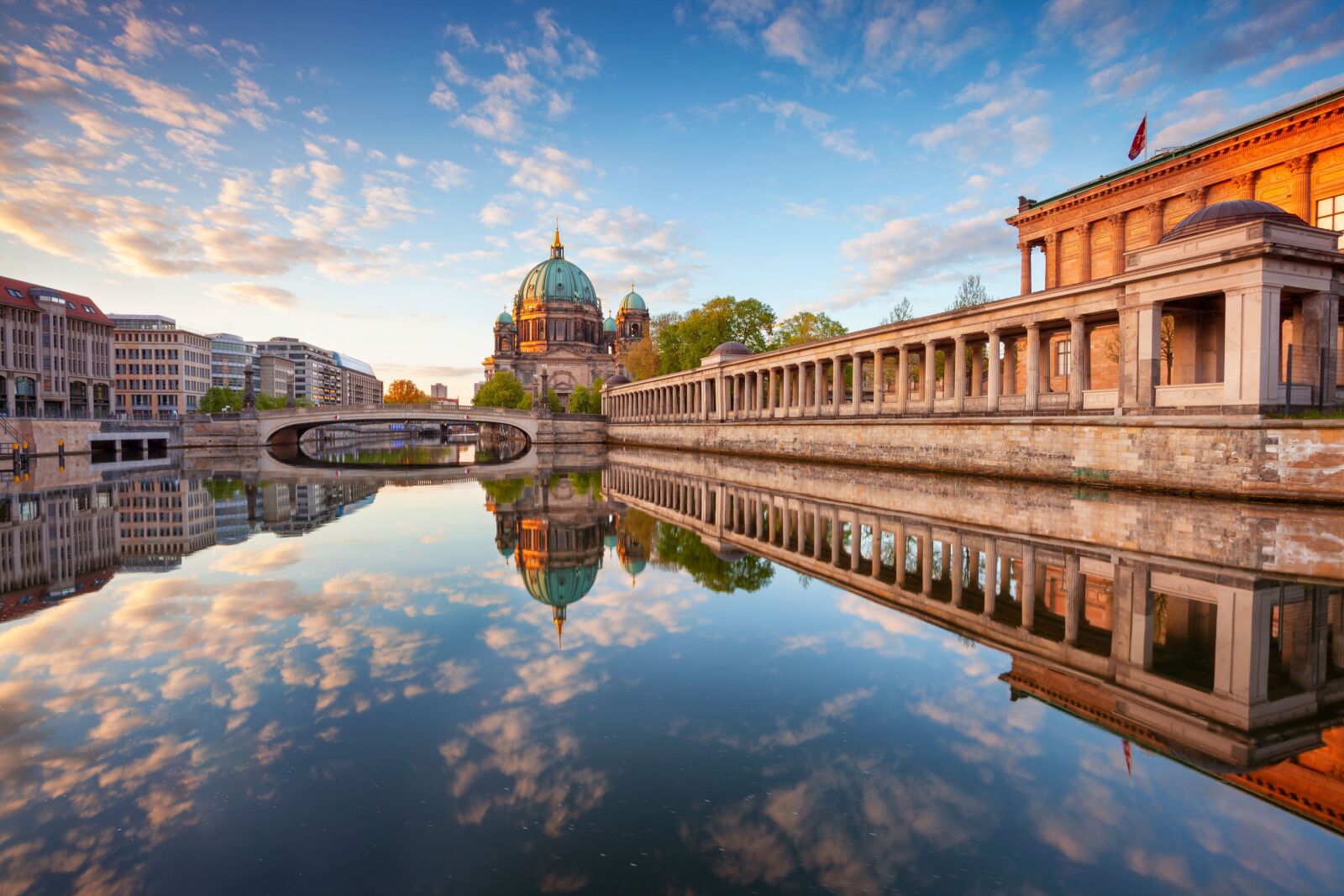
Photo: Rudy Balasko/Shutterstock
Museum Island is a collection of five world-renowned museums on an island in the Spree River. The island was named a UNESCO World Heritage Site in 1999.
The idea for Museum Island was born in the early 19th century, and it quickly gained support from the city’s leaders. Four of the five museums in Berlin on the island are housed in historic buildings dating from 1830 (the Altes Museum, or Old Museum) to 1930 (the Pergamon Museum). In addition to the Old Museum and the Pergamon Museum, Berlin’s Museum Island is home to the Neues Museum (New Museum), the Alte Nationalgalerie (the Old National Gallery), and the Bode Museum.
The island is home to some of the world’s most famous ancient artifacts, including the Pergamon Altar, the Ishtar Gate, the bust of Queen Nefertiti, and Rodin’s “The Thinker.”
One ticket is good for admission to all five museums. Tickets do sell out, so buy them in advance online. Ticket prices do not include guided tours or audio guides, which have an extra fee.
- Address: Museumsinsel Berlin, Bodestraße 1-3, 10178 Berlin
- Hours of operation: Daily, 10 AM – 6 PM
- Cost: Adults are 19 Euro (about $21), students are €9.50 (about $11), children under 18 are free.
Berlin Puppet Museum
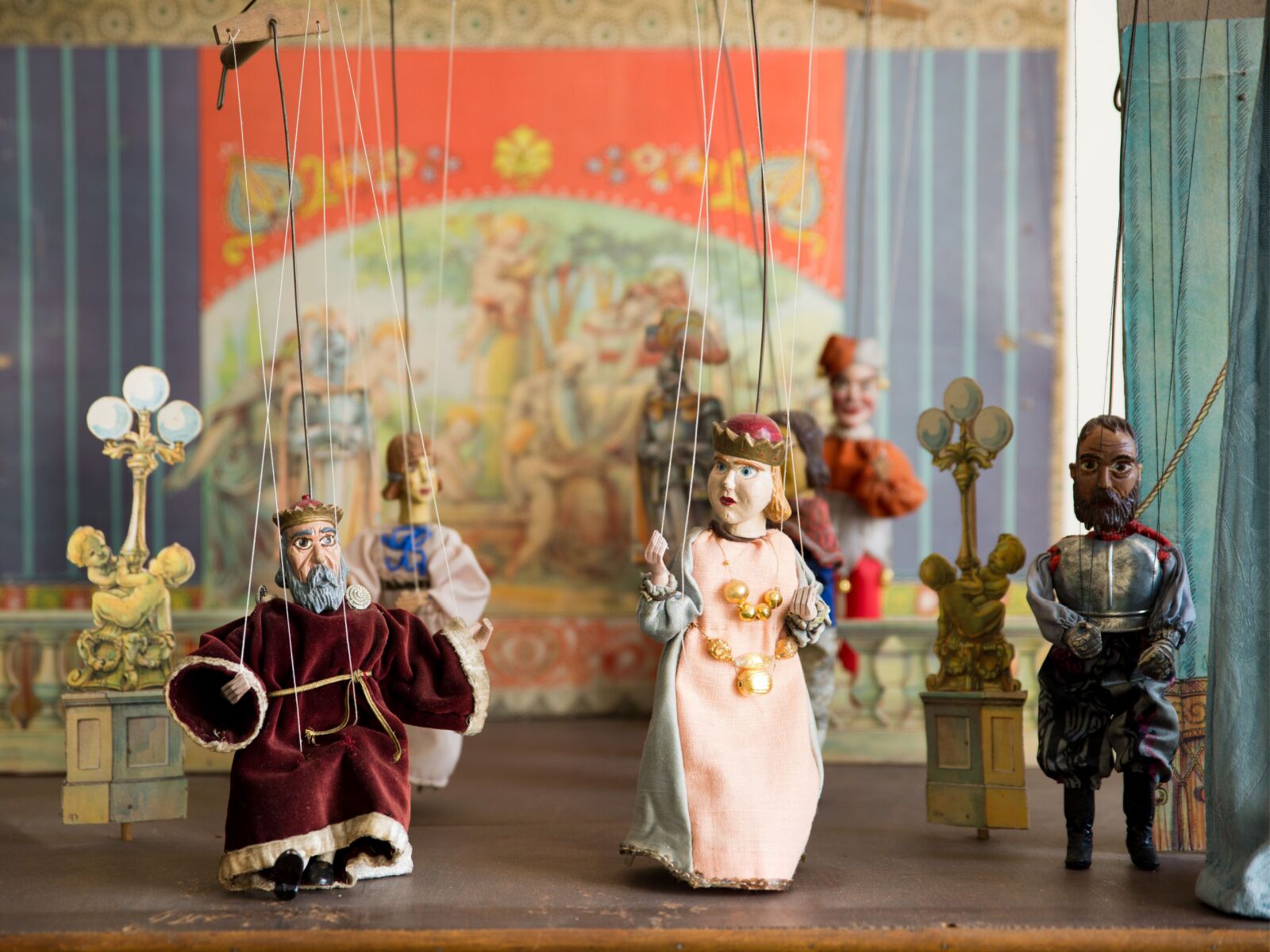
Photo: Dziurek/Shutterstock
The Puppentheater Museum (Puppet Theater Museum) is a unique museum dedicated to the art of puppetry. It was founded in 1966 by puppeteer Hans-Jürgen Fettig. Fettig had a lifelong passion for puppetry and wanted to create a space where he could share his love for the art form with others. The museum has since grown to become one of the most important puppetry museums in Europe, with a collection of over 8,000 puppets from all over the world – though not all are on display, of course.
Tours for kids and families are very hands-on and the museum offers puppet making workshops, storytelling, and puppetry performances throughout the year. The museum displays are in German and English, but only some events are English-specific. It’s one of the best museums in Berlin for kids who are tired of the usual science and history museums.
- Address: Karl-Marx-Straße 135, 12043 Berlin
- Hours of operation: Tuesday – Sunday, 2 PM – 6 PM (shows are in the mornings)
- Cost: Adults are €3 (about $3.50), children are €2.50 (about $3). Performances are €5 (about $5.50) per person.
Berlin Jewish Museum
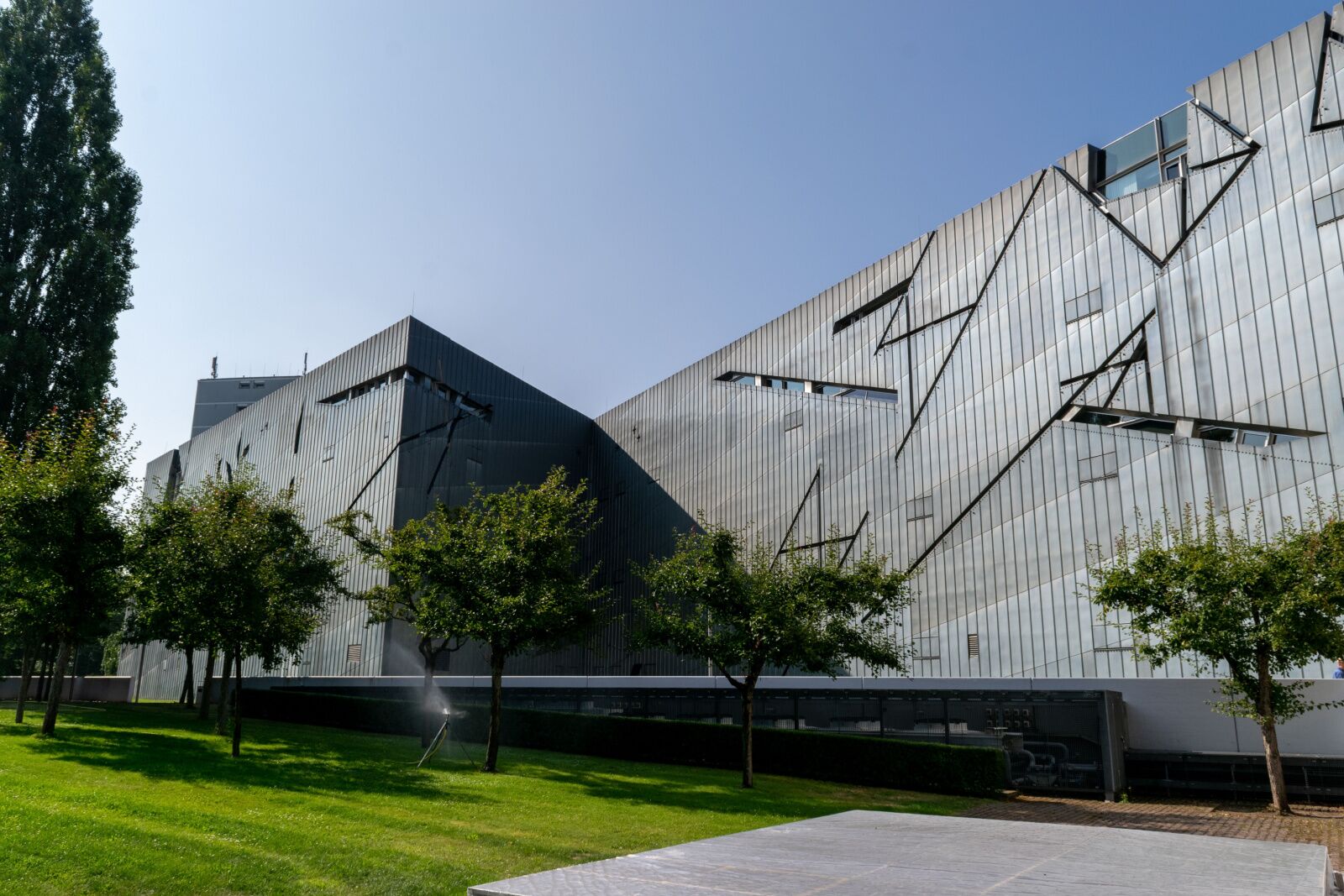
Photo: Diego Gorzalczany/Shutterstock
The Berlin Jewish Museum is in Berlin’s Kreuzberg District, which was a center of Jewish life and culture in the city pre-WWII. The Jewish Museum in Berlin opened in 2001 but was first conceived in the 1970s as a way to preserve stories and histories of Jews in Germany to share with the world.
The building’s design is based on a number of complex and interconnected geometrical shapes meant to mirror the history of Jews in Germany. The building’s most distinctive feature is its zinc-coated façade with a series of angular, sharply angled lines, evoking the Star of David. The building also features a large courtyard surrounded by concrete walls inscribed with the names of German Jews killed during the Holocaust.
The museum has a collection of over 10,000 objects, including artwork, photographs, and personal belongings of Jewish people who lived in Germany. The museum is also home to the Academy of the Jewish Museum , which offers courses and workshops on Jewish history and culture. You can reserve a time slot online.
- Address: Lindenstr. 9–14, 10969 Berlin
- Hours of operation: Daily, 10 AM – 7 PM. Last admission at 6 PM.
- Cost: Most exhibits are free, special exhibits are €8 (about $8.50). The first Sunday of every month is free.
Berlin Natural History Museum
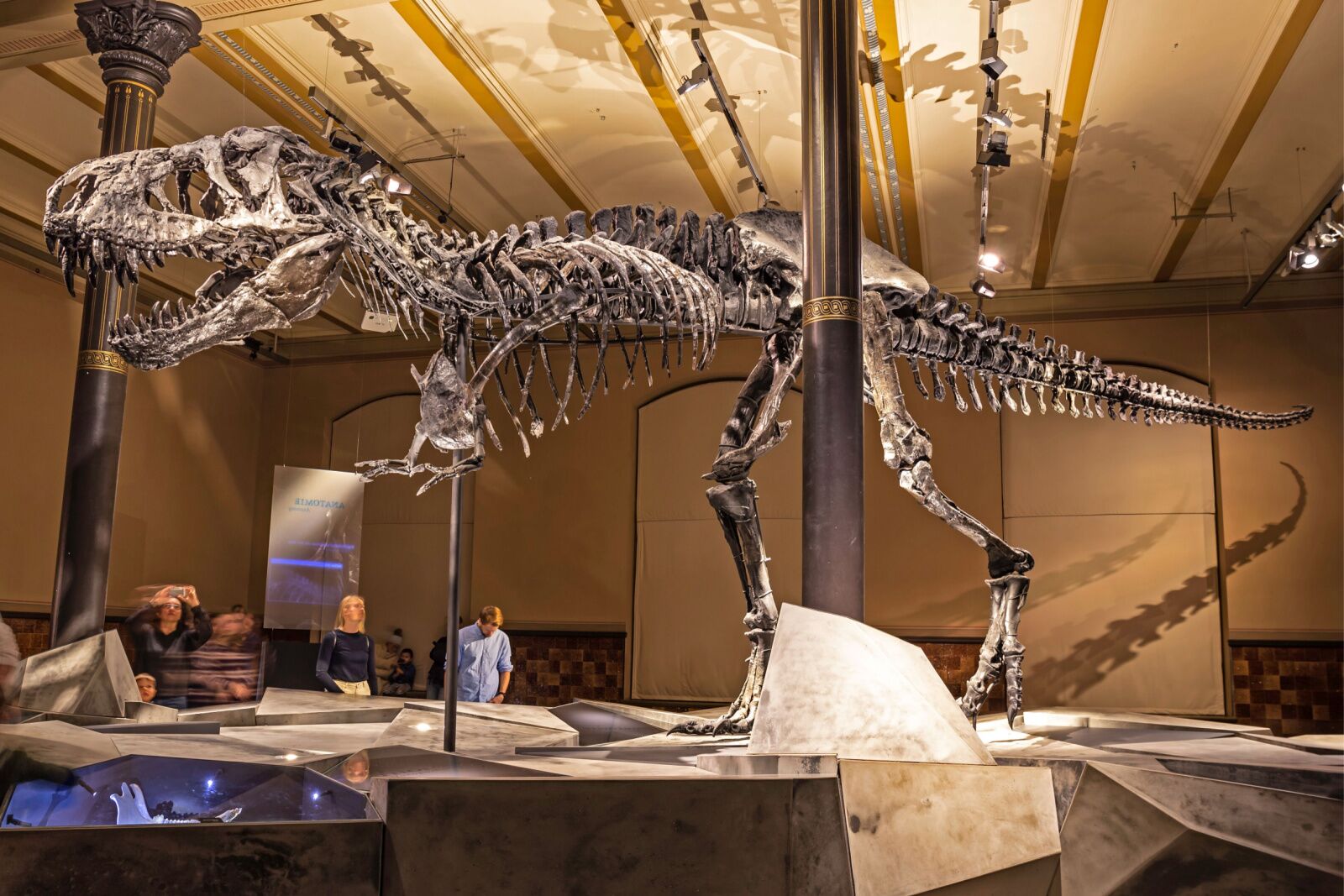
Photo: Pani Garmyder/Shutterstock
The Museum für Naturkunde Berlin, also known as the Natural History Museum, is one of the largest and oldest natural history museums in Germany. It was founded in 1810 and has been in its current building in Berlin’s Mitte district since 1889.
The museum’s collection includes over 30 million specimens, including fossils, minerals, and animal specimens from around the world. The museum is also home to the world’s largest mounted dinosaur skeleton: a Brachiosaurus more than 32 feet tall — and an extensive collection of meteorites.
The museum is huge and has an audio guide you can run from your phone to help you navigate around the large space. This is the kind of place where you may spend the entire day, especially if you’re keenly interested in the natural world. All exhibits and attractions are in German and English, as well as several other languages.
- Address: Invalidenstraße 43, 10115 Berlin, Germany
- Hours of operation: Tuesday – Friday, 9:30 AM – 6:30 PM; Saturday and Sunday, 10 AM – 6 PM. Last admission 30 minutes before closing. Closed Mondays.
- Cost: Adults are €8 (about $8.50), kids are €5 (about $5.50), family tickets are €15 (about $17)
Topography of Terror
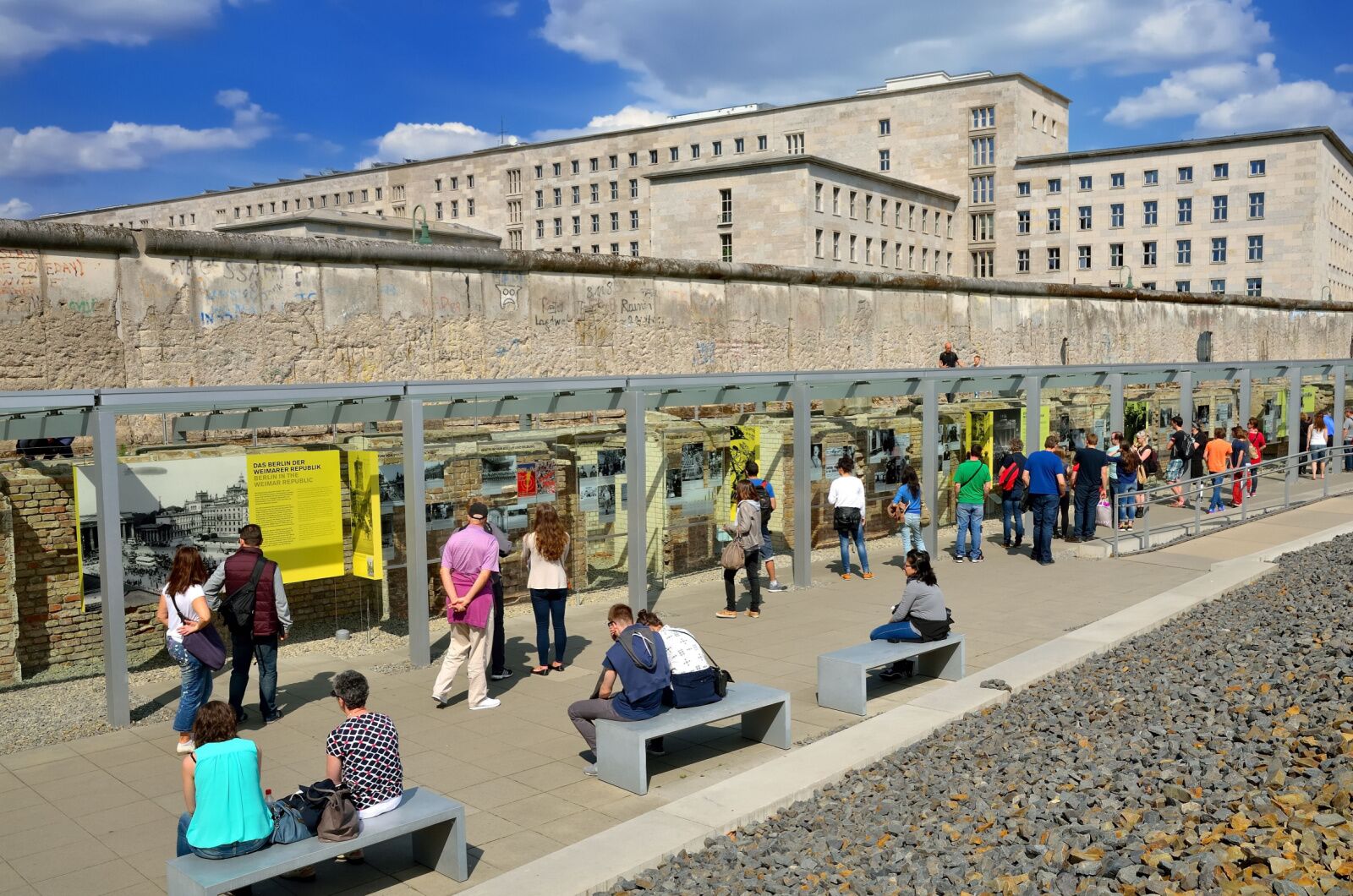
Photo: MagMac83/Shutterstock
The Topography of Terror Berlin explores the history of Nazi terror and the crimes committed by the Nazi regime during World War II. It’s on the site of the former Gestapo headquarters. The museum’s outdoor exhibition includes remnants of the original buildings, including fragments of the basement cells where prisoners were held and tortured.
The museum is relatively new (opened in 2001) and has permanent exhibitions that include photographs, documents, and personal stories of victims, as well as displays on the rise of the Nazi Party, the concentration camps, and the Holocaust.
Visitors can explore the many different aspects of this dark period in history, including the role of the Gestapo and other Nazi organizations, the persecution and murder of Jews and other minorities, and the resistance movements that emerged in response to Nazi terror. It’s heavy, but it’s a really well-done and interesting museum, especially if you’re keen to learn about German (and international) history.
Guided tours are complimentary throughout the day and available in English and German. Audio guides are also free and available in more than a dozen languages.
- Address: Niederkirchnerstraße 8, 10963 Berlin
- Hours of operation: Daily, 10 AM – 4 PM
- Cost: No fee
Museum of Letters
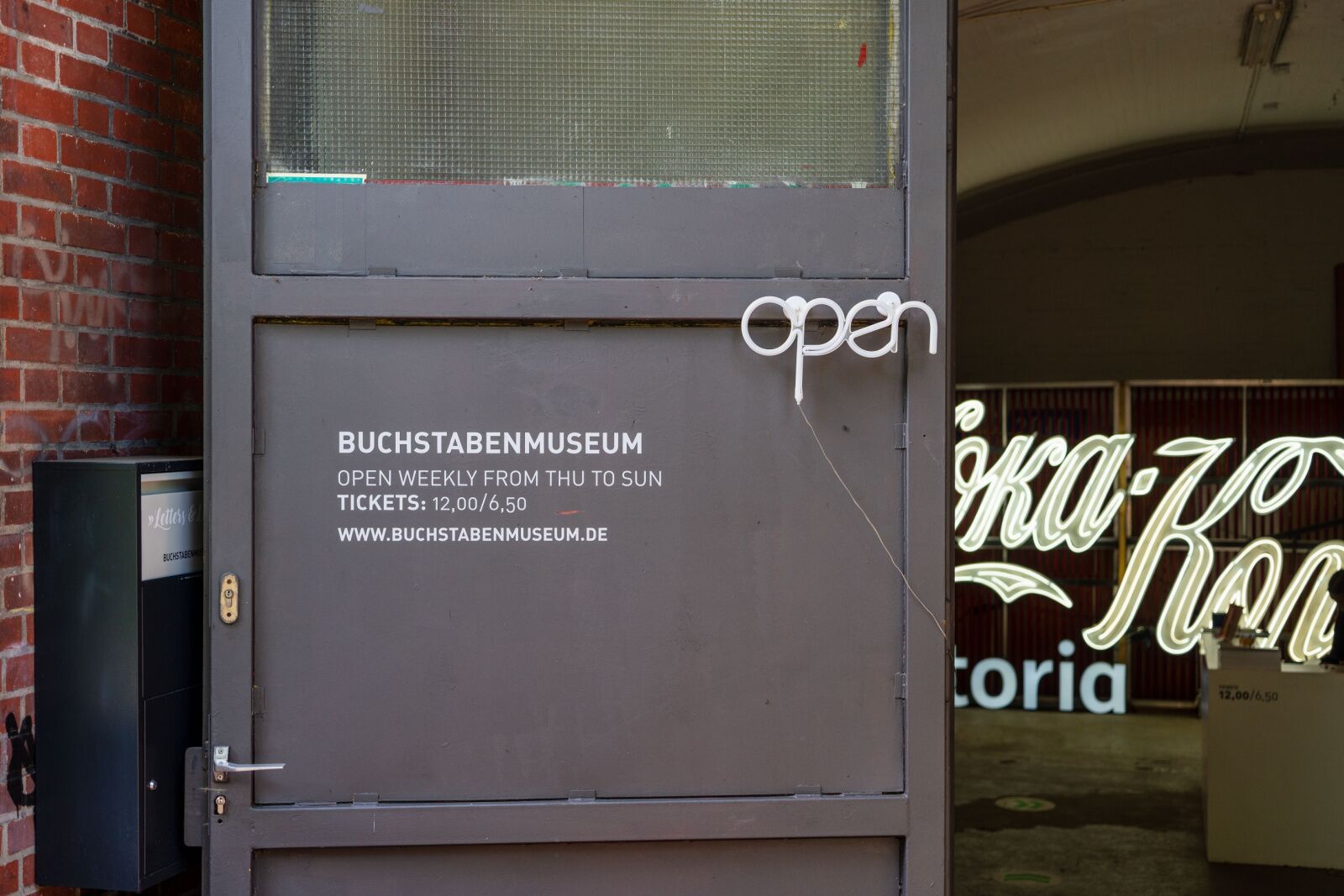
Photo: Mo Photography Berlin/Shutterstock
The Buchstaben Museum (Museum of Letters) is one of the more unique museums in Berlin, dedicated to preserving and showcasing vintage signage from across the city. The museum has more than 200 individual letters and symbols from various shops, bars, and other businesses throughout Berlin.
The building was originally used as a factory for manufacturing women’s clothing, and was designed by the renowned Berlin architect, Wilhelm August Boeckmann. After the factory was closed, the building was used for various purposes (none of which lasted) before becoming the museum – fitting, given its industrial roots.
The interior has a clean and minimalist design, which allows the individual letters and symbols in the collection to stand out. It’s one of the more surprisingly interesting museums in Berlin.
- Address: Stadtbahnbogen 424, 10557 Berlin
- Hours of operation: Thursday – Sunday, 1 PM-5 PM
- Cost: Adults are €12 (around $13), students are €6.50 (around $7.50), children 14 and under are free
Hamburger Bahnhof Museum
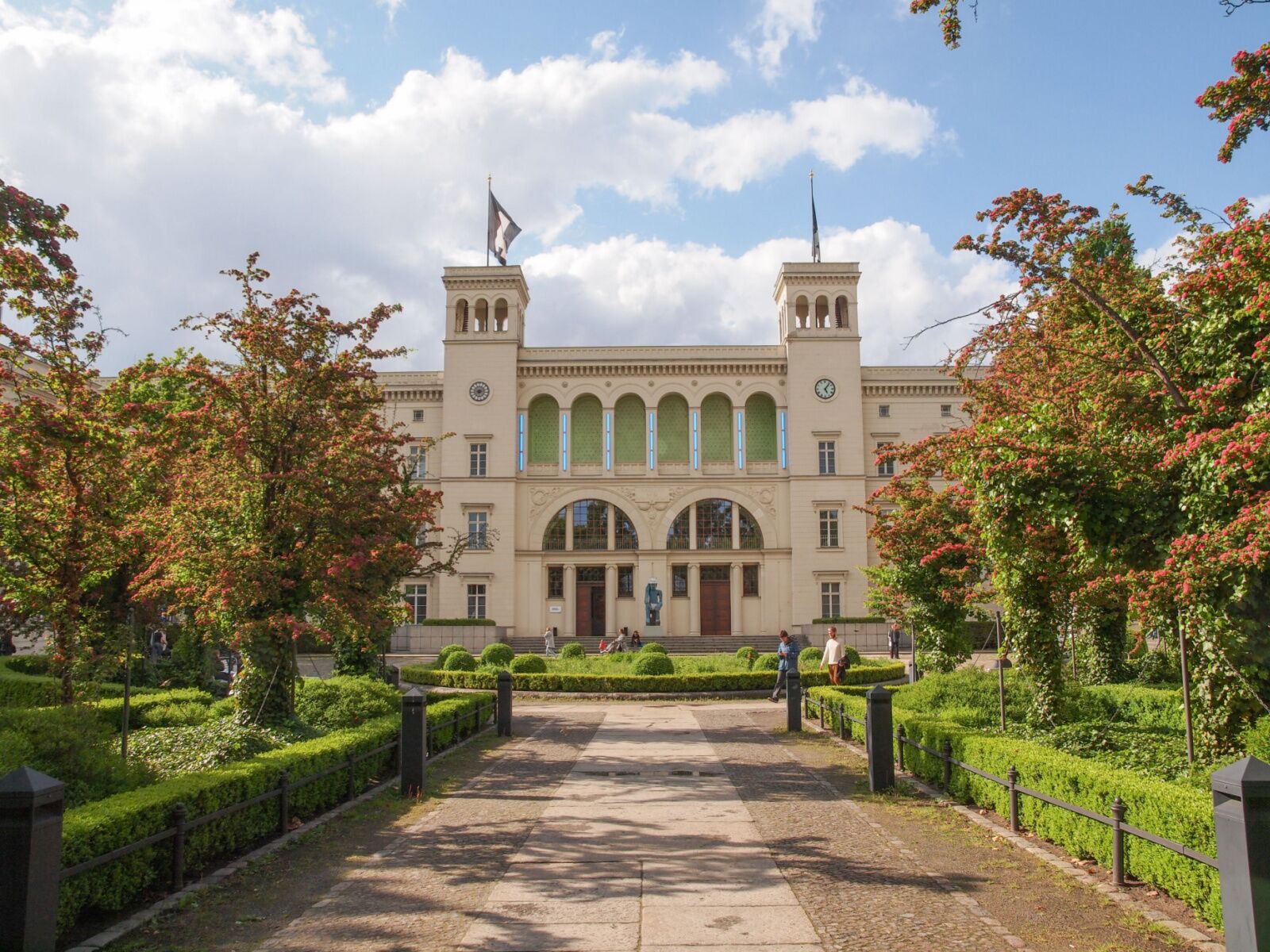
Photo: Claudio Divizia/Shutterstock
Hamburger Bahnhof is a contemporary art museum housed in a former railway station from the mid-19th century. The building was designed by the renowned architect Friedrich Neuhaus and opened in 1846 as the terminus for the Berlin-Hamburg railway line. It was used for passenger traffic until 1884 and freight traffic until 1904 before it closed entirely. For a while, the Berlin State Museums stored collection items there, but it was eventually turned into a contemporary art museum in the 1990s. It’s also the only train station in Berlin from that time period.
The Hamburger Bahnhof collection includes works from some of the most important contemporary artists in the world, including Andy Warhol, Joseph Beuys, and Anselm Kiefer. You can buy tickets at the window, but you might as well buy them in advance to avoid a wait if you know when you want to go.
- Address: Invalidenstraße 50 – 51, 10557 Berlin
- Hours of operation: Tuesday – Friday, 10 AM – 6 PM; Saturday and Sunday, 11, AM – 6 PM
- Cost: Adults are €10 (around $11), students are €5 (around $5.50), children 17 and under are free
Where to stay in Berlin
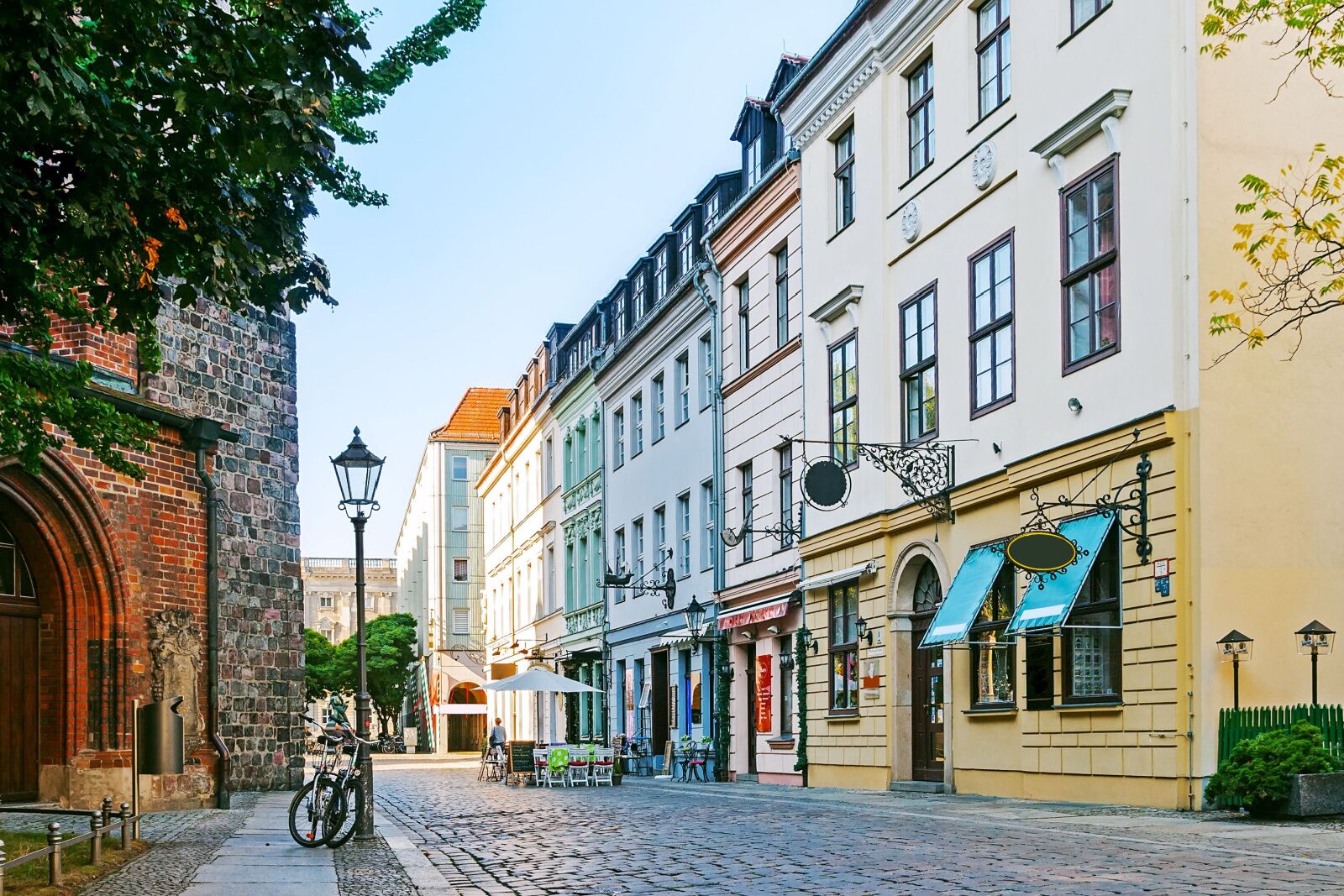
Photo: Pani Garmyder/Shutterstock
Berlin has many great neighborhoods, each with its own unique vibe and attractions. Mitte is a central neighborhood perfect for exploring historical landmarks and trendy cafes, while Kreuzberg is an artistic and affordable neighborhood with a multicultural atmosphere and bustling nightlife. Neukölln is an up-and-coming, less-touristy neighborhood, Prenzlauer Berg is trendy and stylish, and Friedrichshain has a bit of an alternative vibe with budget-friendly accommodation options. But Berlin is a huge city, so the most important factor may just be how close your hotel is to public transportation.
Of course, there are also tons of cool Airbnbs if you prefer a more local experience.
We hope you love the spaces and stays we recommend! Just so you know, Matador may collect a small commission from the links on this page if you decide to book a stay. Listed prices are accurate as of the time of publication.
URBAN LOFT Berlin
Urban Loft Berlin offers loft-style rooms and apartments with an industrial design aesthetic. It used to be a factor and now has cool social areas, like a co-working area and screening room. The on-site restaurant has pre-packaged breakfast boxes, coffee bar, and a menu with plenty of vegan and vegetarian options throughout the day. There’s also a rooftop bar and a co-working area, and it’s only a 10-minute walk to Berlin’s central train station. Rates start around $100 per night in the off-season.
CALMA Berlin Mitte
Hotel Calma Berlin Mitte is a three-star hotel in the Mitte neighborhood of Berlin, which is known for its history, culture, and shopping. The hotel is housed in a modern building, but it’s surrounded by buildings with a rich history, including the Berlin Wall Memorial and the former Stasi headquarters. It’s one of the most highly rated small hotels in Berlin and a great value given the stellar location. Rates also start around $100 per night.
Orania.Berlin
Orania.Berlin is in central Kreuzberg, just a short walk from popular bars, restaurants, and nightlife spots. It’s also close to several of the most popular museums in Berlin, including the Jewish Museum, and historical sites like Checkpoint Charlie. The hotel is housed in a beautifully restored early 20th-century building that was once a dance hall, a jazz club, and then a cinema. The building’s historic charm has been preserved and combined with modern design elements. It’s a great pick for a unique hotel in Berlin. Rates start around $220 per night.